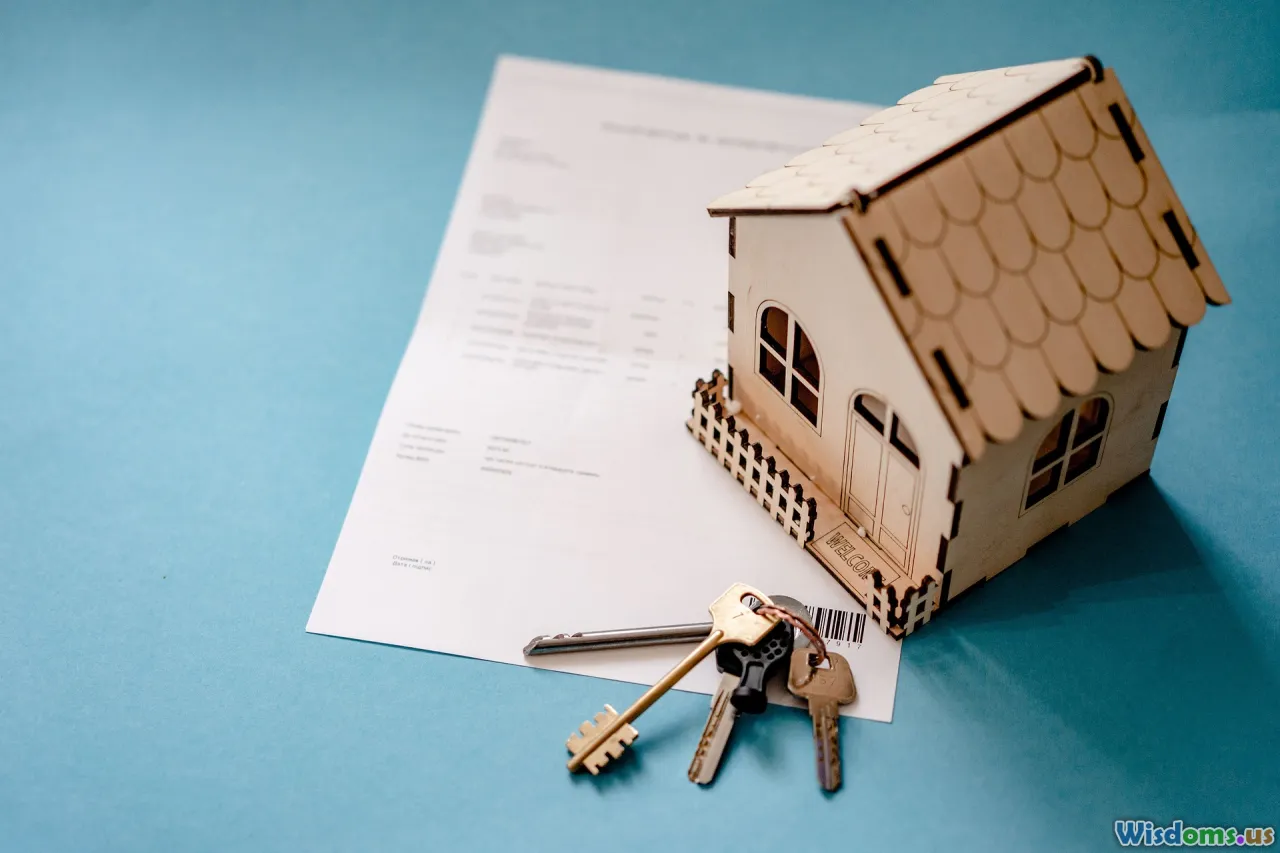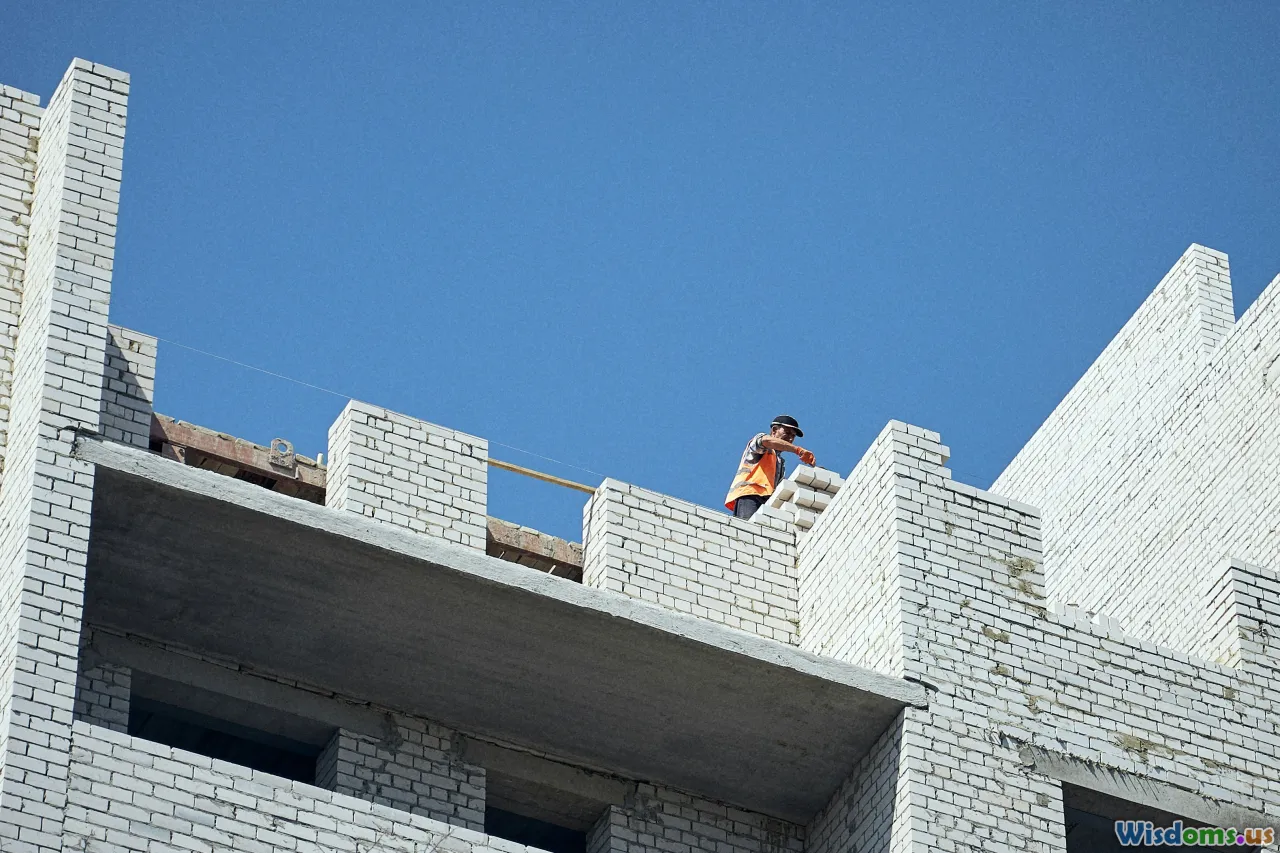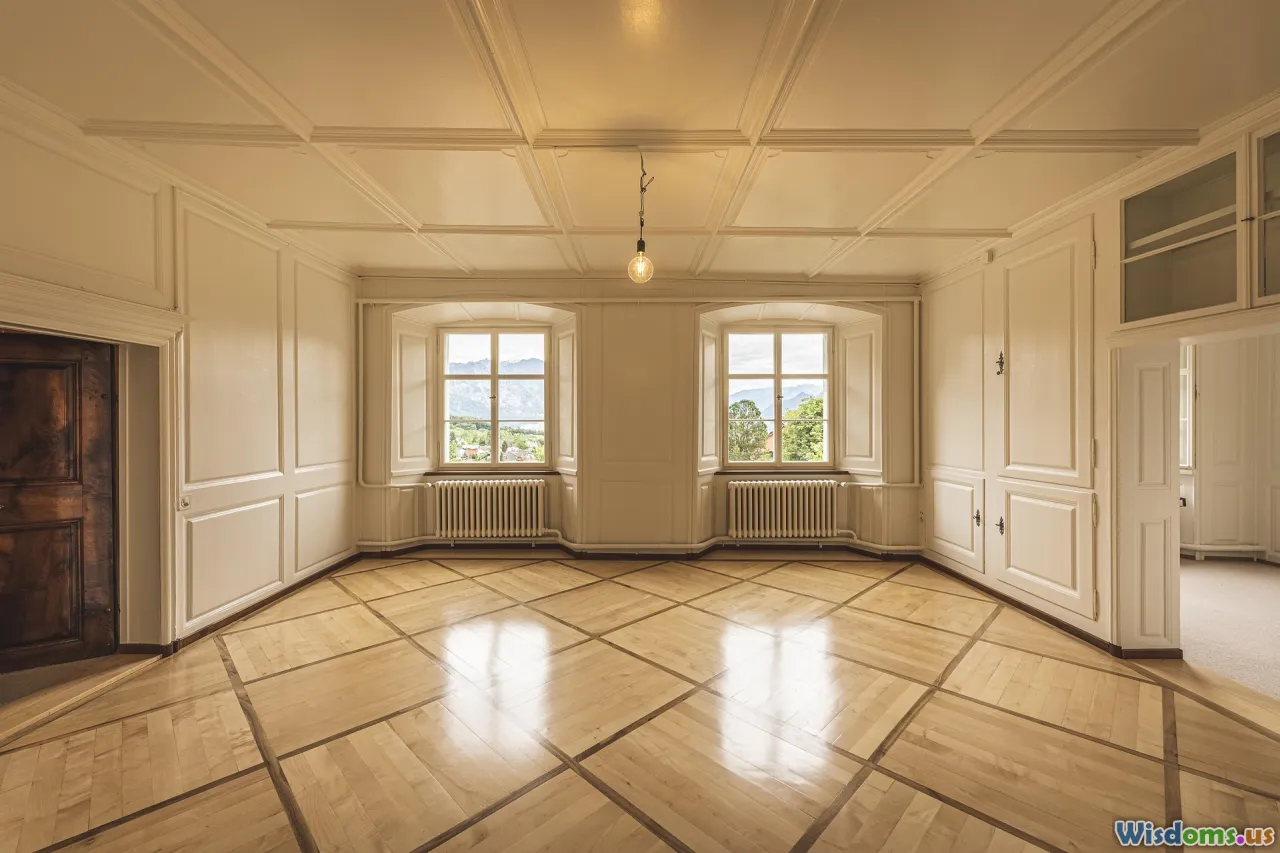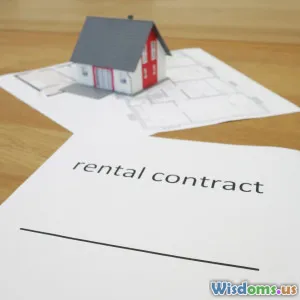
My Biggest Mistakes Flipping Properties Lessons Learned
18 min read Key mistakes I made while flipping properties and the valuable lessons learned from each misstep. (0 Reviews)
Flipping properties can seem like the express lane to financial freedom: buy low, renovate, and cash in. But behind each glossy before-and-after photo is a world where risk regularly outpaces reward. I’ve been through that wringer, making my share of costly blunders. In this article, I’ll open up about my biggest mistakes flipping properties—sharing actionable lessons for anyone looking to succeed where I once stumbled.
Overpaying for the 'Perfect' Project

It’s tempting to fall for a listing that oozes “potential.” In my early days, I did.
What happened: I purchased a charming craftsman at $362,000—the highest “as-is” comp on the block. Tall trees, mid-century fixtures, and a vintage fireplace clouded my judgment. The thrill of winning a bidding war trumped my risk assessment. Months later, as hidden foundation issues piled on and the market cooled, profit was replaced with break-even anxiety.
Why it happens: Emotional attachment is a silent killer. Sometimes we buy into dream scenarios—“I can transform anything”—ignoring scary realities like over-inflated local prices or inflated after-repair-value (ARV) estimates. Enthusiasm made me blind to stubborn plain math: The golden rule of flipping is profit comes at the buy, not the sale.
Lesson: Never chase a property with thin margins, no matter how irresistible. Always run conservative ARV comparisons and factor in at least a 10-20% price drop safety cushion. Let numbers—not excitement—lead your decision-making.
Tip: Use objective tools like local value heatmaps and municipal permit records. I now avoid properties that don’t offer at least a 15-20% margin, even in hot markets.
Underestimating Renovation Costs

Few realities bite harder than when the budget balloons. Early in my journey, I made tight estimates—even rounding down my renovation figures to secure deals.
A painful example: I planned a kitchen gut renovation at $18,000—"because my friend did it for that last year." Hidden termite damage added $5,200. Outdated knob-and-tube wiring tacked on $3,400. Cabinets needed custom sizing—costing double the stock options I’d planned.
Why it happens: Rookie flippers learn fast that HGTV budgets rarely sync with real world bills. There’s an avalanche of hidden problems (asbestos, outdated wiring, wet basements) you simply won’t notice on a quick walkthrough. Contractors commonly underbid to win the job, then charge for "unexpected" change orders. Commodity prices (like lumber and copper) can shift dramatically in just a season.
Lesson: Always add a 15-25% contingency to your renovation budget. Assume you’ll discover problems behind walls, under floors, and in utility hookups—then plan your financing accordingly. When bidding, demand itemized estimates. And get familiar with basic renovation costs in your market using sources like Remodeling Magazine's Cost vs. Value report.
Actionable advice: Have a trusted third-party (builder friend, experienced local flipper) walk the property pre-offer. Pay for independent inspection—even if the seller declines—so you bid with eyes open.
Overestimating the After-Repair Value (ARV)

One deal showed me the hard way what wishful thinking can do. We crunched ARV numbers based on a recent $540,000 sale two blocks away.
What went wrong: That comp was a totally different home—a larger Colonial with a finished basement and extra bath, on a quieter street. My flip was a smaller ranch, mid-interior block, still close to a commercial corridor. I stretched my ARV to match top-dollar—even though buyers would clearly see the difference.
Why it happens: It’s easy to cherry-pick the highest neighborhood sale and gloss over mismatches (condition, floorplan, exact location, finish levels). Eager to close deals, some investors "massage" ARV when the numbers don’t quite work.
Lesson: Get rigorous. Compare only like-for-like (bed / bath count, square footage, ages, and amenities). Never use that one outlier sale as proof of potential. Appraisers don’t—and neither will savvy buyers. When in doubt, use the second- or third-highest comp, then subtract at least 5-10% for margin of safety.
Example: On my next deal, instead of anchoring on a $390k outlier, I used three similar 90-day solds averaging $355k—with subtle adjustments for minor differences—leading to a much safer (and ultimately accurate) estimate.
Picking Poor Partners and Contractors

Nothing tanks a flip quicker than hiring the wrong team. I once ignored red flags and hired the cheapest “general contractor” based on little more than a handshake and a discounted bid.
What happened: He claimed a five-week timeline. It took four months. Subpar drywall work had to be torn out. Fixtures disappeared. To cut costs, I enlisted a friend—whose demo job cracked a support beam. Legal threats began flying over payment disputes.
Why it happens: Desperation and stress push us to bargain shop or rely on unvetted acquaintances. Sometimes even experienced pros overpromise, juggle too many jobs, or leave for more lucrative projects halfway through.
Lesson: Always verify licensing, check references, and ask for a detailed contract with payment milestones. Visit past job sites if possible. Pay via traceable methods and withhold final payment until all inspections clear. Separate business and friendship: never hire friends for technical roles unless you're ready for heartbreak and lost money.
Pro tip: If possible, develop an ongoing relationship with a proven team—a great plumber, tile setter, and general contractor familiar with your standards. Long-term mutual loyalty pays dividends in pricing, scheduling, and honesty.
Ignoring the Neighborhood Factor

I once flipped a house that outclassed nearly everything within a quarter-mile—but still sat for months unsold.
What holds back resale: Buyers care about curb appeal and finish level, but equal weight falls on schools, commutes, local businesses, crime stats, and even tiny signals like street parking and noisy neighbors. I’d poured money into high-end fixtures hoping to "raise the bar," but most buyers at that location weren’t ready to pay a premium.
Insight: Bright granite and luxe faucets won’t compensate for traffic noise or a far-flung commute. Even the best flip "in the wrong spot" quickly becomes a tale of price drops and aging listings.
Lesson: Study area demand intimately. Walk the block at various times. Talk to residents. Run neighborhood-specific resale stats rather than just ZIP code medians. If the area draws mostly investors or FHA buyers, don't overspend on finishes. Some upgrades recoup better returns in city centers than suburbs or rural markets.
Example: After losing thousands trying to surpass the neighborhood ceiling, I now match my renovation scale and features to typical local sales, upgrading where ROI is proven but resisting the urge to “over-improve.”
Overextending Financially

The specter of "just one more flip" can be intoxicating. In 2022, I juggled three houses simultaneously—right as interest rates began to climb and unexpected repairs popped up.
What crumbled: All three projects stalled; cash flow dried up. Bridge loans came due, but slow sales left me scrambling. Hard choices—firing contractors, cutting personal expenses, negotiating with lenders—became unavoidable. My profits thinned to the bone or turned to losses.
Why it happens: That next deal always beckons, but divided attention and capital create compounding risks. Carrying costs (taxes, insurance, loan payments) quickly eat through thin contingency funds. Markets shift, leaving flippers with too much inventory and not enough buyers.
Lesson: Grow with caution and maintain robust reserves. No flip is such a certain profit that it should risk your capital safety net, family stability, or credit score. Only scale up when you’re confident you can handle hiccups across every property at once, and don’t get seduced into over-leveraging.
Actionable strategy: Periodically stress-test your finances—run worst-case profit scenarios for each property, assume longer holding times, and work out fallback plans for unexpected events.
Neglecting Permits and Inspections

When caught up in the whirlwind, there’s a powerful urge to save time by skipping tedious permits and inspections. On an early flip, a trusted GC insisted, “The city never checks bathrooms.” We went ahead without permits.
Outcome: The new buyers, scheduling their own home inspection, found improperly vented plumbing and flagged electrical work. The sale nearly fell through, and I wound up spending extra to correct code issues—and swallow fines—before finally closing.
Risks involved: Skipping permits may shave days or dollars off a project, but risks include failed sales, lower appraisals, drawn-out negotiations, and legal headaches. Moreover, buyers may later sue if unrevealed shoddy work creates long-term problems.
Lesson: Always obtain required permits—no exceptions. Develop a close relationship with trusted city inspectors and stay proactive with local code requirements. Document all work for interested buyers. Properly permitted projects resell faster, with less risk and greater buyer confidence.
Expert tip: Factor in the time and cost for permits in both scheduling and budgeting. Once burned, I now even include permit receipts and compliance certificates as part of my buyer information packet.
Poor Time Management & Delays

Budget overruns are bad—but schedule overruns can be fatal when holding costs pile up. Early in my career, I didn’t map out day-to-day timelines. I’d let contractors schedule themselves, deferring to their timelines.
Real impact: Demo and framing stretched from one week to three after a key worker was reassigned. Appliance deliveries ran late because I ordered just-in-time. Subcontractors overlapped, leading to rework. Each delay meant taxes, loan interest, utilities, and insurance ran that much higher—shrinking my ultimate profit.
Why it happens: Lack of a master schedule leaves too much to chance. Vendors and tradespeople are often juggling other jobs, and unless you map dependencies—or enforce penalties for lateness—you’re stuck waiting.
Lesson: Plan every phase—from demolition to the final punch-list—with buffered timelines. Order materials early, with delivery dates confirmed in writing. Hold a brief standup meeting on site at least weekly (daily if possible) to track progress versus plan. Prepare checklists and completion benchmarks for every trade on site. When possible, employ project management software like Buildertrend or even basic Gantt charts.
Hard-won insight: Including contracts with clear liquidated damages for major delays encourages more accountability. Allow for unplanned delays in your schedule and stay communicative with your agent and buyers throughout.
Failing at Effective Marketing and Sales

Even if you master renovations and budgeting, a property sitting unsold undercuts every other effort. Early on, I tried to save money with minimal marketing: blurry cell phone shots, basic listing copy, and no virtual tours.
Impact: My home languished for 47 days while virtually identical homes moved swiftly at asking or above. Only after upgrading photos, boosting social media ads, and partnering with a seasoned agent did we attract substantive offers.
Why it matters: Flipping hinges as much on the final handoff as the initial craft. Poor listing quality—bad photography, minimal staging, weak digital listing—signals neglect to buyers, keeping viewings depressed and offers low.
Lesson: Professional photos and well-written, benefits-focused listings are non-negotiable. Consider minor staging to highlight functionality. Invest in online marketing—Zillow boosts, Facebook/Instagram ads. A great agent with neighborhood experience can command higher sales prices than DIY efforts, even after commissions.
Example: My top profit margin came from a flip where I spent $1,250 more than usual on professional staging, drone shots, and targeted ads. We had five serious offers before the first open house.
Every property flip is its own beast. It’s a blend of courage and calculation, of learning from missteps to refine tactics and boost the odds on the next round. My stumbles—painful as they felt—are now guardrails steering me clear of the pitfalls that once swallowed my profit and energy. The treasure is in the tech and honesty you bring to each new project. If you arm yourself with these lessons, flipping properties remains a challenging but supremely rewarding pursuit.
Rate the Post
User Reviews
Popular Posts


















